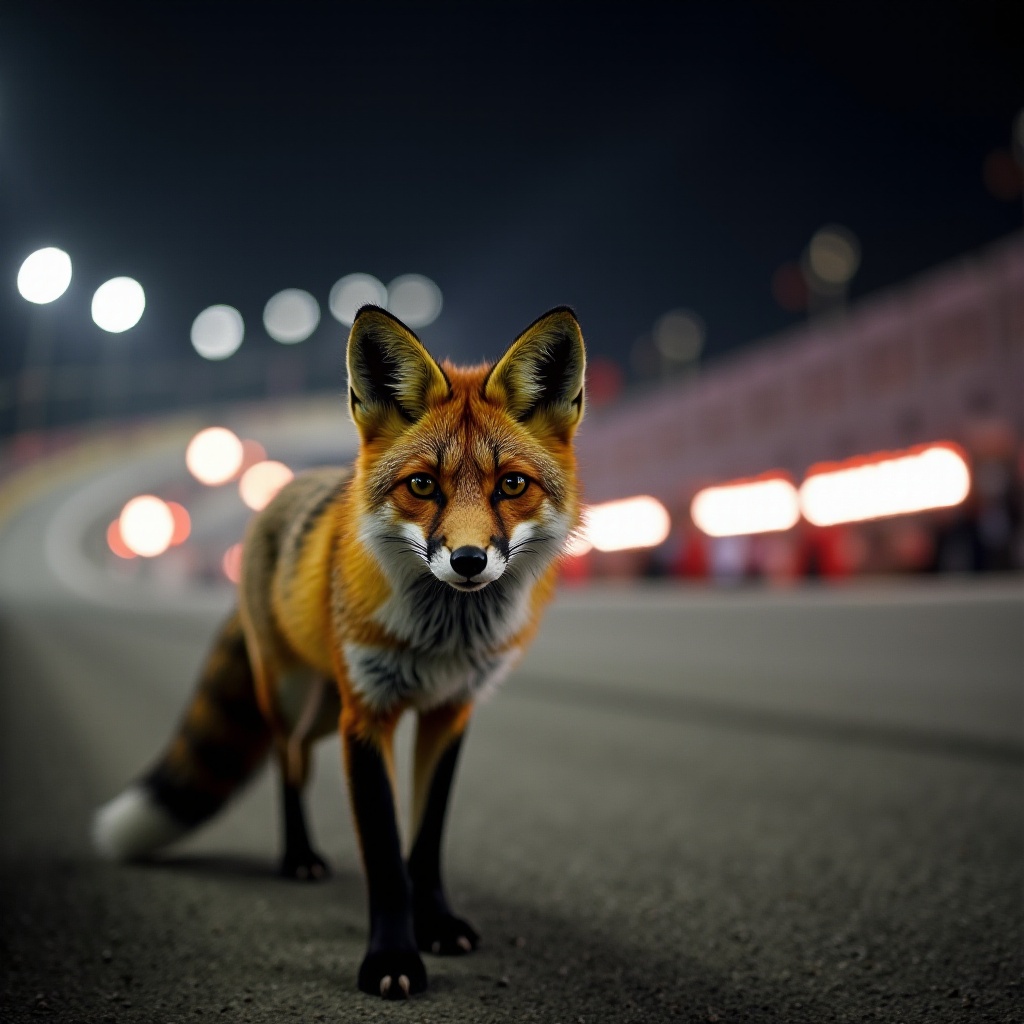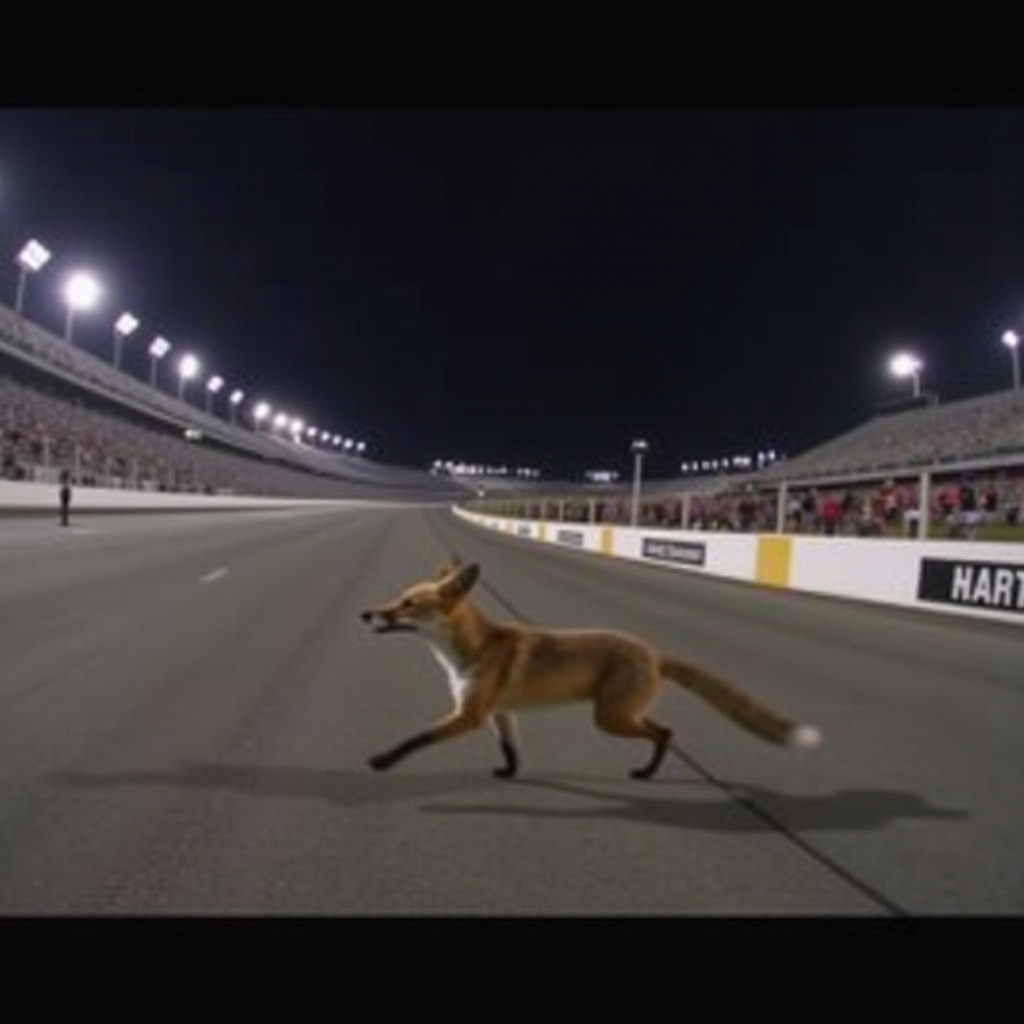Introduction
An unforeseen visitor made quite an entrance on the NASCAR track, raising eyebrows and triggering numerous conversations across the sports community. This peculiar event involved a fox caught on a ground camera, creating a unique stir among viewers and media alike. Understanding the various aspects surrounding this situation sheds light on the role of ground cameras in sports and their broader implications.

The Unexpected NASCAR Incident
NASCAR fans are used to adrenaline-pumping races, where the focus is on roaring engines, skillful maneuvers, and speed. However, during a recent event, the spectators were in for a different kind of surprise—a fox appeared on the track, captured unexpectedly by a ground camera. The presence of the fox disrupted the anticipated flow of the competition momentarily. The unexpected appearance quickly became a talking point and spread like wildfire across social media platforms. While animal sightings in such settings are rare, this incident sparked both amusement and curiosity among fans and officials.
Ground Cameras in NASCAR: An Overview
Ground cameras are a fundamental part of modern sports broadcasting, particularly in NASCAR. These cameras are strategically placed to capture close-up, on-the-ground perspectives of the action. They provide viewers with intimate and immersive angles, often enhancing the thrill and excitement of the race. They are indispensable for ensuring high-quality broadcasts and thorough race analysis. In NASCAR, ground cameras serve several purposes:
1. Enhanced Viewer Experience: Offering unique angles and close-ups that regular cameras might miss.
2. Detailed Analysis: Allowing teams and analysts to scrutinize minute details of the race, including car performance and driver technique.
3. Safety Monitoring: Helping officials maintain safety by providing comprehensive views of the track for quick response to incidents.
The integration of ground cameras has undeniably revolutionized the broadcasting experience, providing fans with closer and more engaging coverage.
Capturing the Fox on Film
The incident unfolded rapidly. During a live broadcast, a ground camera intended to give viewers an up-close perspective of the speeding cars captured the unexpected visitor—a fox darting across the track. The footage showed the fox navigating the field, seemingly oblivious to the roaring engines and the ongoing race. What made this moment particularly interesting was how it showcased the unpredictability of live events. The presence of wildlife within such a structured environment is rare but memorable. This unexpected moment was as brief as it was surprising. The camera operators and directors, seasoned veterans of managing live sports broadcasts, quickly adapted, ensuring the event was documented while maintaining focus on the race itself. The fox’s appearance was short-lived yet memorable, illustrating the unpredictable nature of live events.

Public and Media Reaction
Public reaction to the fox’s appearance was immediate and widespread. Social media platforms buzzed with amusing comments, memes, and shares of the footage. Fans of NASCAR and casual viewers alike found common ground in the oddity of the event. The media also played a significant role in propelling the incident into the spotlight. News outlets covered the story, noting the rarity of such an occurrence and its impact on the viewing experience. The unexpected interaction between wildlife and a high-speed sport provided a refreshing narrative, generating significant buzz and engagement.

Technological Insights: Ground Camera Specifications
The ground cameras employed in NASCAR are sophisticated pieces of technology. Designed to withstand the intense environment of a race track, these cameras offer high-definition quality and are equipped with weather-resistant features. The technology behind these cameras plays a crucial role in capturing every detail, even under challenging conditions. Key specifications:
1. High Frame Rate: Capturing fast-moving objects with precision.
2. Durability: Built to endure the harsh conditions of a race environment.
3. High Resolution: Providing clear, detailed images even at high speeds.
4. Remote Operation: Allowing operators to control the cameras from a distance, ensuring safety and optimal angles.
These advanced technological qualities enabled the ground camera to capture the fleeting moment of the fox with clarity, emphasizing the importance of cutting-edge equipment in modern sports broadcasting.
Future Implications for NASCAR and Sports Broadcasting
The unexpected appearance of the fox on the track presents both challenges and opportunities for NASCAR and other sports broadcasting organizations. This incident highlights key considerations for the industry moving forward. Challenges:
– Wildlife Management: Ensuring the safety of both animals and participants by preventing such incidents in the future.
– Enhanced Monitoring: Implementing systems to detect and manage unexpected wildlife intrusions.
Opportunities:
– Viewer Engagement: Leveraging rare moments to create unique content that attracts and retains viewers.
– Technological Advancements: Investing in smarter, more efficient camera systems that can adapt to various unforeseen events.
As sports broadcasting continues to evolve, the incorporation of robust wildlife management and more adaptive technology could enhance the overall safety and viewing experience. The focus will be on creating an environment where both participants and unexpected visitors, like the fox, can coexist safely.
Conclusion
The fox incident on the NASCAR track serves as a reminder of the unpredictable nature of live sports events and the critical role of technology in capturing these moments. The response from the public and media highlights the role of spontaneous occurrences in engaging audiences. Looking ahead, the emphasis on safety and technological advancements will shape how such incidents are managed, offering new opportunities for storytelling in sports broadcasting.
Frequently Asked Questions
What type of camera captured the fox at the NASCAR event?
A high-definition ground camera, designed for durability and remote operation, captured the fox during the NASCAR event.
How did the public react to the fox incident at NASCAR?
The public reaction was widespread amusement and engagement, with social media buzzing and news outlets covering the story extensively.
What are the future implications for wildlife management in sports events?
Future implications include enhanced wildlife management systems to prevent such incidents and an opportunity for more adaptive and advanced broadcasting technology.

